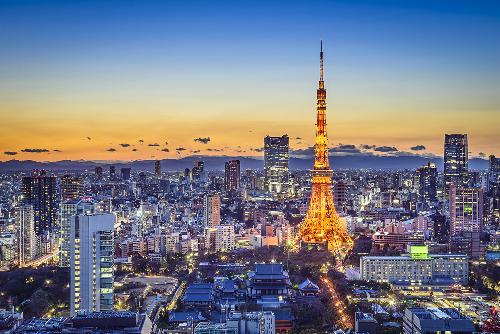ANALYSIS: Broadridge expects heightened Asia trading to continue
19th May, 2025|Gregory Rosenvinge

Elevated levels of trading in April as a result of US president Donald Trump’s ‘Liberation Day’ tariffs regime is likely to continue for Asia-Pacific traders, according to a managing director at Broadridge Financial Solutions, as global volatility drives markets.
With multiple US and European exchanges reporting new trading records last month after ‘Liberation Day’ on April 2, Broadridge’s James Marsden (pictured) said Asia-Pacific clients were positioning themselves to keep pace with the global trend.
“In general, we expect our clients to continue to increase trade volumes over time. Their focus is on differentiating their service and providing a better client experience. They will also need to manage shorter settlement cycles, shorter processing windows, and longer trading hours,” said the Broadridge head of post trade business for Asia-Pacific in an interview with FOW.
“Firms in Asia-Pacific need to modernise and implement new technologies. Broadridge is committed to supporting our clients in Asia-Pacific and globally as they operate, innovate, and grow in this evolving environment. We do not see the trend as differing between regions. Many of our Asia-Pacific clients offer trading in global markets (e.g., G20, etc.), and we saw increased activity on spike days for our Asia clients, in line with global trends.”
Asian exchanges had a busy month for trading in April. Singapore Exchange (SGX) reported a 24% rise in derivatives trading volume last month, including record foreign exchange (FX) trading as the Asian exchange became the latest to report tariff-boosted liquidity. Elsewhere, Hong Kong Exchanges and Clearing (HKEX) saw April trading increase 18% year-on-year, as resurgent technology and China sentiment drove volumes. Meanwhile, the Australian Securities Exchange (ASX) reported a 38% year-over-year increase in average daily futures and options on futures volume in April, showing a broad-based growth in activity in the Asia Pacific region.
Trading on these markets particularly picked up after Trump’s Liberation Day reciprocal tariffs were announced. FOW Data shows SGX, HKEX and ASX aggregate volumes ranged from 935,272 contracts to 1.5 million lots in the five days prior to April 2, before noticeably increasing as high as 2.3 million contracts on April 7.
“Based on statistics from our software-as-a-service (SaaS) post-trade service, we observed spikes in transaction volumes in April across our international client base, notably peaking on specific business days. This was seen across a broad range of asset classes, including equity, fixed income and derivatives… Clients are on heightened alert, and some have decided to delay system changes,” Broadridge’s Marsden told FOW.
“Our platforms coped well with the increased volume, and we have significant capacity available in our cloud-based data centres. Trading and processing therefore went smoothly despite the increased trading volume… We cannot specifically provide granular asset class information from our statistics, but we have seen significant increases in transaction volumes from our clients. On certain days, some clients had twice their average trading volume.”
The trend in Asia-Pacific trading volumes broadly reflected the rest of the world. HKEX-owned London Metal Exchange (LME) reported a record month of trading in April, with volumes up 3% year-on-year, while activity at Euronext booked a slight increase driven by strong growth in its single stock options offering. European rival Eurex saw volumes rise 14% last month, led by interest rates and equity index trading, it said last week.
Meanwhile in the US, CME Group reported a spike in April activity, trading nearly 40 million lots a day on average through the volatile month. US competitor Intercontinental Exchange (ICE) saw April trading breach 11 million lots a day on average for the first time, setting an all-time monthly record as its energy and financials segments continue to see activity spike. Cboe Global Markets saw trading of US options soar 30% year-over-year in April to 13.3 million lots in volume, while Miami International Holdings, which operates four MIAX US options exchanges, on Wednesday reported April volumes of 191.1 million contracts, up 34% year-over-year to a new record.
Cboe is growing its Data Vantage business coverage in the Asia-Pacific with the appointment of two sales directors to lead efforts in growing the arm’s analytics and indices businesses in the region.
Abaxx Exchange is set to launch Singapore gold kilobar futures on June 12, after a delay, in the commodity exchange’s latest expansion. In March, Crumb told FOW that Asia deserves its own gold market that meets the region's demand for kilobars as Abaxx Exchange prepared to launch gold futures. Meanwhile, gold should be considered as a high-quality liquid asset similarly to government bonds, according to an Abaxx Exchange advisor who argued the precious metal should also be recognised as eligible collateral.


